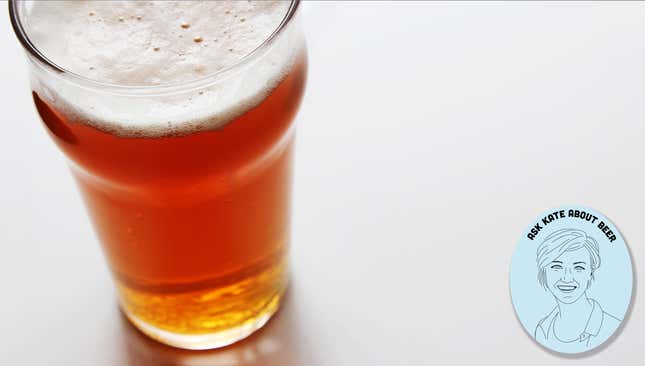
Welcome to Ask Kate About Beer, in which The Takeout’s resident beer expert answers everything you’ve ever wanted to know about beer but were too drunk to ask. Have a question? Shoot it to beer@thetakeout.com.
A reader reached out to me via Twitter with the following paradox:
@kbernot, You’re the 2nd knowledgeable person I’ve recently heard talking about IPAs being relatively quick to go bad. And all this time I’ve thought IPAs were invented in pursuit of long-lasting-ness; the extra hops were supposed to be a preservative.
Pro-tip to readers: Questions that flatter me are more likely to be answered.
No, but really, I’m answering this question because it’s a good one. The IPA origin story states that this style of beer developed as British merchants began shipping beer from the homeland to British troops and expats in India, beginning as early as the 1630s. But it wasn’t until the latter part of the 18th century when the proto-IPA began to show up on Indian shores; it was a more hoppy, strong version of pale beers brewed for domestic consumption. The greater level of hops was, indeed, intended to preserve the beer for long sea voyages, as hops have some antimicrobial properties.
So why, our reader asks, are modern IPAs “relatively quick to go bad”?
It hinges on what we mean by “go bad.”
When I say that modern IPAs go off quickly, what I mean is that the volatile chemical compounds responsible for delicious hop aromas and flavors degrade relatively quickly when exposed to light, heat, and air. This can come from a bottle sitting on a hot shelf, or from a keg languishing in a bar’s forgotten storage closet. Oxidation doesn’t make the beer spoiled, just not as tasty as it could be. An IPA that’s four months old will probably taste dull and maybe even cardboard-ish compared to its fresh counterparts. (The grains or malts in beer can age, too, but as they do, they tend to develop into other, still pleasant flavors. Crackery malts might become more sweet and honey-like, or caramel flavors might deepen into toffee notes over time.) Because modern IPAs are so hop-focused, we want those citrus, pine, fruit, or floral flavors to be bright and fresh-tasting.
Those British merchants, though, weren’t hung up on how fresh the beer’s hops tasted. They just didn’t want it to spoil.
“The type of spoilage they were trying to prevent back in those days was literally a bacterial infection or some type of souring or spoilage of the beer,” Neil Witte, draught beer quality ambassador for craft-beer industry group the Brewers Association, tells me. “Whatever delicate hop aromas and flavors existed were certainly not there by the time they arrived at their destination.”
So yes, hops do help preserve beer, but their beautiful characteristics also fade quickly. Because we don’t have to be as concerned about bacterial spoilage as the 18th-century British merchants were, I say drink those IPAs as quickly as possible. Three months is my general rule-of-thumb lifespan for IPAs—but of course, the fresher, the better.